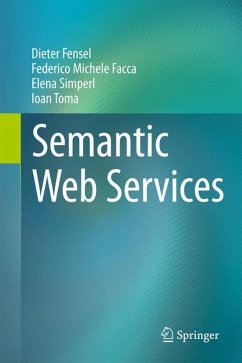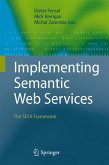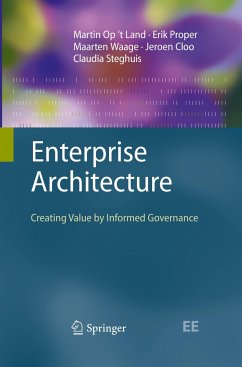Job titles like "Technical Architect" and "Chief Architect" nowadays abound in software industry, yet many people suspect that "architecture" is one of the most overused and least understood terms in professional software development.
Gorton's book tries to resolve this dilemma. It concisely describes the essential elements of knowledge and key skills required to be a software architect. The explanations encompass the essentials of architecture thinking, practices, and supporting technologies. They range from a general understanding of structure and quality attributes through technical issues like middleware components and service-oriented architectures to recent technologies like model-driven architecture, software product lines, aspect-oriented design, and the Semantic Web, which will presumably influence future software systems. This second edition contains new material covering enterprise architecture, agile development, enterprise service bus technologies, RESTful Web services, and a case study on how to use the MeDICi integration framework.
All approaches are illustrated by an ongoing real-world example. So if you work as an architect or senior designer (or want to someday), or if you are a student in software engineering, here is a valuable and yet approachable knowledge source for you.
Gorton's book tries to resolve this dilemma. It concisely describes the essential elements of knowledge and key skills required to be a software architect. The explanations encompass the essentials of architecture thinking, practices, and supporting technologies. They range from a general understanding of structure and quality attributes through technical issues like middleware components and service-oriented architectures to recent technologies like model-driven architecture, software product lines, aspect-oriented design, and the Semantic Web, which will presumably influence future software systems. This second edition contains new material covering enterprise architecture, agile development, enterprise service bus technologies, RESTful Web services, and a case study on how to use the MeDICi integration framework.
All approaches are illustrated by an ongoing real-world example. So if you work as an architect or senior designer (or want to someday), or if you are a student in software engineering, here is a valuable and yet approachable knowledge source for you.
From the reviews of the second edition:
Choice - Oustanding Academic Title in 2012
"The volume is organized in three main parts, the first of which provides a comprehensive but clear definition of software architecture. The second and third parts are devoted to current and emerging practices, respectively. ... This book will be of great help to students of computer science or software engineering, but above all it will provide practitioners with a guide to architecture that they can adopt to help direct their careers and professional development. Summing Up: Highly recommended. Upper-division undergraduates and above." (L. Benedicenti, Choice, Vol. 49 (5), January, 2012)
"A subset of the software system architecture discipline is discussed in this book. ... Gorton begins with an overall description of what he calls 'the subdiscipline known as software architecture.' ... useful in the technical library of a large financial institution for those engaged in major systems development and evolution." (Mordechai Ben-Menachem, ACM Computing Reviews, January, 2012)
Choice - Oustanding Academic Title in 2012
"The volume is organized in three main parts, the first of which provides a comprehensive but clear definition of software architecture. The second and third parts are devoted to current and emerging practices, respectively. ... This book will be of great help to students of computer science or software engineering, but above all it will provide practitioners with a guide to architecture that they can adopt to help direct their careers and professional development. Summing Up: Highly recommended. Upper-division undergraduates and above." (L. Benedicenti, Choice, Vol. 49 (5), January, 2012)
"A subset of the software system architecture discipline is discussed in this book. ... Gorton begins with an overall description of what he calls 'the subdiscipline known as software architecture.' ... useful in the technical library of a large financial institution for those engaged in major systems development and evolution." (Mordechai Ben-Menachem, ACM Computing Reviews, January, 2012)







